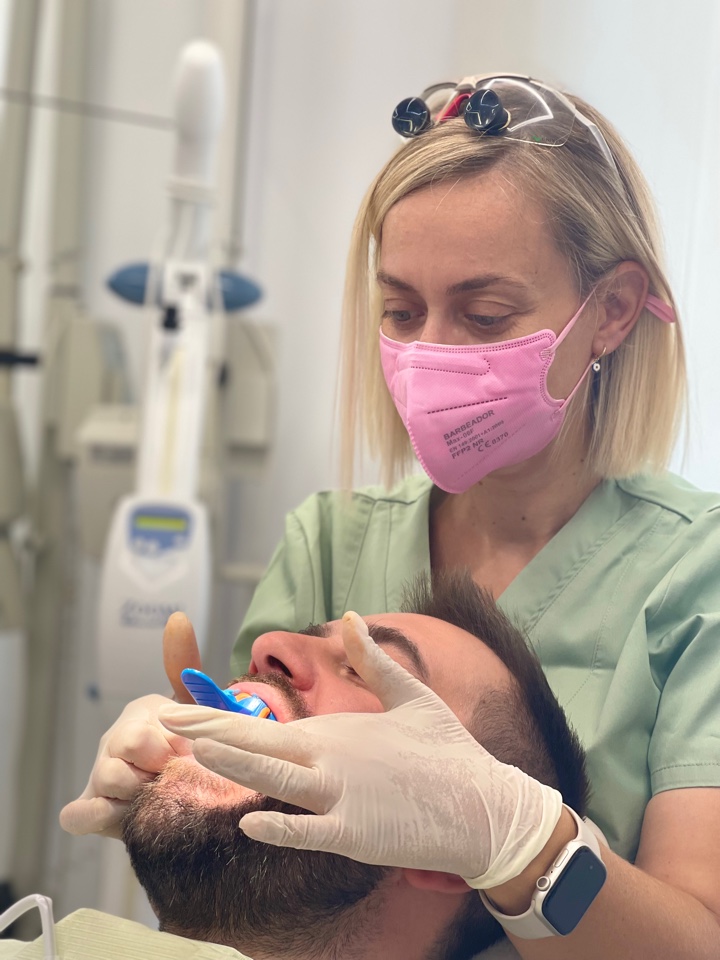
Bouboulinas 35,
Piraeus 185 35
10:00 a.m. - 19:00 p.m.
Monday - Friday
Info@company.com
+021-483-893

Piraeus 185 35
Monday - Friday
+021-483-893
Cosmetic dentistry focuses on improving the appearance of a person’s teeth, gums, and overall smile. While traditional dentistry addresses oral health and function, cosmetic dentistry emphasizes aesthetics, aiming to enhance the visual appeal of the teeth and smile.

Oral surgery is a specialized field of dentistry focused on diagnosing and treating a wide range of conditions related to the mouth. Oral surgeons undergo extensive training to perform various surgical procedures that can address both functional and aesthetic issues.

Prosthodontics is a field of dentistry focused on the design, creation, and fitting of artificial replacements for teeth and other parts of the mouth. Prosthodontists restore oral function, comfort, appearance, and health to patients with missing or deficient teeth and oral structures.

Implantology is a specialized field of dentistry that focuses on dental implants, which are artificial tooth roots placed into the jawbone to support replacement teeth or bridges. This field encompasses the diagnosis, surgical placement, and maintenance of dental implants.

Orthodontics is a specialized branch of dentistry that focuses on diagnosing, preventing, and treating dental and facial irregularities. This field primarily deals with correcting misaligned teeth, improper bites (malocclusions), and jaw irregularities.

Endodontics is focused on the study and treatment of the dental pulp and tissues surrounding the roots of a tooth. This field is primarily concerned with the prevention, diagnosis, and treatment of diseases and injuries affecting the dental pulp and periradicular tissues.

Implantology is a specialized field of dentistry that focuses on dental implants, which are artificial tooth roots placed into the jawbone to support replacement teeth or bridges. This field encompasses the diagnosis, surgical placement, and maintenance of dental implants.

Orthodontics is a specialized branch of dentistry that focuses on diagnosing, preventing, and treating dental and facial irregularities. This field primarily deals with correcting misaligned teeth, improper bites (malocclusions), and jaw irregularities.

Endodontics is focused on the study and treatment of the dental pulp and tissues surrounding the roots of a tooth. This field is primarily concerned with the prevention, diagnosis, and treatment of diseases and injuries affecting the dental pulp and periradicular tissues.

Cosmetic dentistry focuses on improving the appearance of a person’s teeth, gums, and overall smile. While traditional dentistry addresses oral health and function, cosmetic dentistry emphasizes aesthetics, aiming to enhance the visual appeal of the teeth.

Oral surgery is a specialized field of dentistry focused on diagnosing and treating a wide range of conditions related to the mouth. Oral surgeons undergo extensive training to perform various surgical procedures that can address both functional and aesthetic issues.

Prosthodontics is a field of dentistry focused on the design, creation, and fitting of artificial replacements for teeth and other parts of the mouth. Prosthodontists restore oral function, comfort, appearance, and health to patients with missing or deficient teeth and oral structures.

Piraeus 185 35

+021-483-893
Piraeus 185 35

Piraeus 185 35
COPYRIGHT 2024 | WEBSITE BY DOMI MEDICAL
COPYRIGHT 2024 | WEBSITE BY DOMI MEDICAL
COPYRIGHT 2024 | WEBSITE BY DOMI MEDICAL